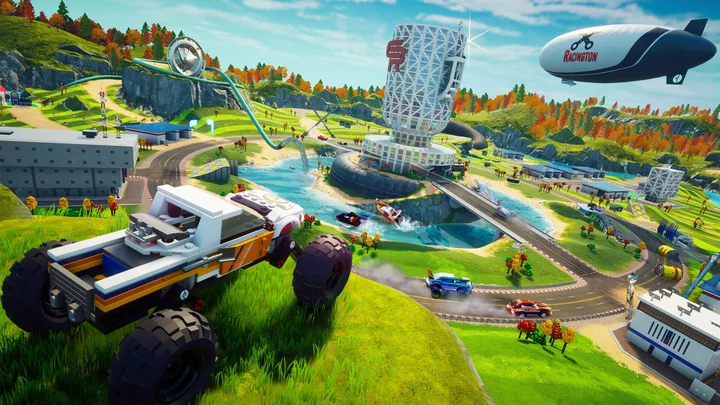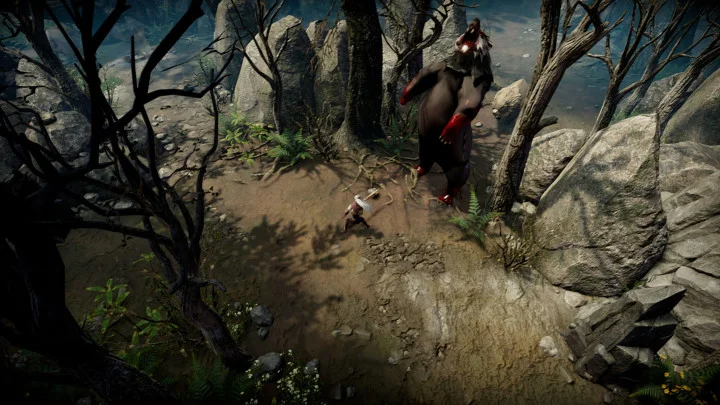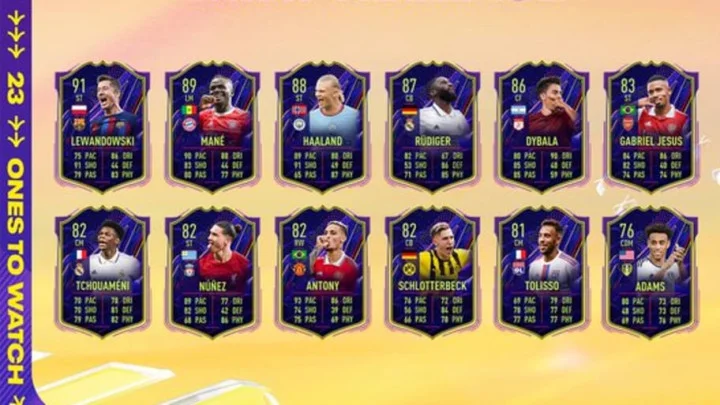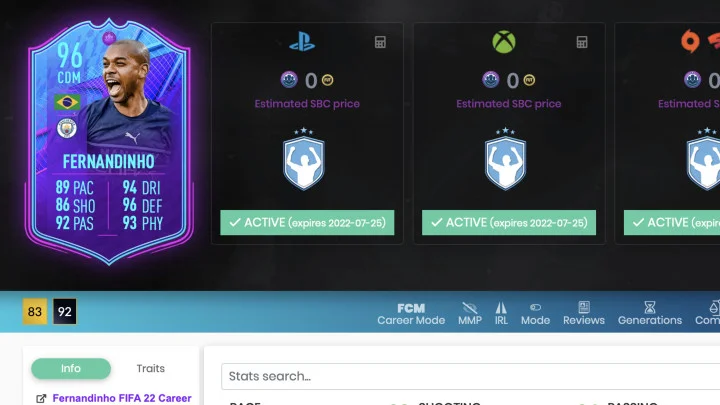Open-world racing games are designed to make you believe that your vehicle can go anywhere. Yet many modern racers take themselves too seriously, with their devotion to realistic simulation throttling their sense of imagination. Lego 2K Racers offers a welcome antidote. This $59.99 PC game (also available on PlayStation, Switch, and Xbox) injects some much-needed chaos to the expansive racing genre in the form of familiar Lego wackiness. However, a few setbacks keep it from being the stone-cold classic it could’ve been.
Burnout, With Blocks
As someone who loves chaotic open-world racing games (and doesn’t care at all about real cars), I’ve been a bit bummed for the past decade or so. The geniuses behind Burnout Paradise are stuck doing mediocre Need for Speed sequels. The Forza Horizon games are technically excellent, but still a tad too restrained for my taste with one foot in the sim racing realm even when doing ridiculous stunts like adding Lego DLC. Where's the wackiness?
I knew that Lego 2K Drive was my kind of racing game as soon as I pressed the boost button. The rough and raw arcade driving mechanics, plus the excellent sense of speed, gave me the exact feeling I’ve yearned for: going a million miles per hour while barely in control. Between boosting, jumping, drifting, and quick turning, you have a fair amount of car-positioning finesse. 2K Drive is a Lego game, so you can manually or automatically transform your vehicle into different forms when you veer off the track. Slick animations turn your car into an offroad cruiser in dirt or a powerboat in water, similar to Sonic & Sega All-Stars Racing Transformed (and way more dramatic than anything in Mario Kart 8 Deluxe).
Lego’s comedy also feels fresh amidst increasingly humorless racing games. After all, this is a game where crashing into stuff repairs your car instead of wrecking it, since it gives you extra bricks. If you’ve played previous Lego games like Lego Star Wars or Lego Jurassic World, you know the style. This is a kid-friendly parody of a racing world, where characters named Parker Carr hang out in Big Butte County. The high energy is infectious.
One limitation I had to soon accept, though, is that Lego 2K Drive isn’t a fully open-world game. Similar to Pokemon Legends: Arceus, the game consists of several sizable open zones that don’t actually connect. You can easily travel between them, but you can’t drive from one biome directly into another. Fortunately, each biome is big enough to keep things from feeling cramped, and maybe this makes the surprisingly complicated game more manageable for younger players with short attention spans.
Lego 2K Drive's Races
With these fundamentals in place, Lego 2K Drive has the structure you’d expect from a modern racing game. Like in a Forza Horizon title, Lego 2K challenges you to gain access to the big races. You do this by competing in smaller events to raise your rank, and by defeating rivals to earn their flags. Exploring the environment unlocks events, so progression feels pretty organic and not annoyingly grinding.
The races, as you’d hope, are the highlight. Courses vary from tight loops around the blocky city streets to sprawling treks across the countryside. The fact that your vehicle changes depending on the terrain lets the designers get especially playful with the tracks. Races become surprisingly tough as you rank up; I had a few close calls, but you can adjust the difficulty.
The side activities are a little less consistent. I like that they occur immediately in the world, not like the races that transport you to a new area. Any mission that focuses on combat is a delight. I ran through hordes of cowboy robots and blasted missiles at runaway crooks. The game’s otherwise standard kart racer power-ups become novel in an open-world context, like a next-gen Diddy Kong Racing. However, other activities are more tedious. Any time I had to knock an object into a location felt like the world’s worst Rocket League match; the anarchic physics aren’t tuned for that kind of precision. Fortunately, the mandatory missions tend to be the better ones anyway, so you can safely ignore the optional duds.
I primarily played Lego 2K Drive in single-player mode, but the game also has multiplayer options. Up to six online players can explore the same shared world at once and take on events. You can skip the open-world entirely and head directly into races, grand prix tournaments, and mini-games with friends or strangers. Local play supports two players via split screen, or with two consoles if you opt for the Nintendo Switch version. All versions support online crossplay, too.
The Lego Store
Lego 2K Drive doesn’t forget that the whole point of Lego is being able to build your own adventures. The garage gives you a vast set of tools for creating your own vehicles. If you’re so dedicated, you can create a ridiculous car, brick by brick. But feel free to take shortcuts by leveraging templates or modifying cars you’ve acquired. Additionally, you can create different load-outs to swap between while roaming.
Although the toolset won’t limit your imagination, the microtransactions might. Lego 2K Drive has a real-world money shop where grease monkeys sell custom brick packs, driver minifigs, new engine sounds, and vehicles. You also earn currency in-game for the shop, but the coolest-looking stuff is the priciest (or only around for a limited time). Seeing a shiny new Shadow Z-Wave rocket boat for sale made me feel a lot more self-conscious about my off-brand Batmobile.
The store only sells cosmetics items. Cars have weight class stats, and you can upgrade the rides with skill perks unlocked by playing the game. Lego 2K Drive isn't a pay-to-win title, but cosmetics are especially meaningful in a game that puts such a big emphasis on player expression. So it’s unfortunate to see so much of that locked behind a paywall in an already full-priced console game—one aimed at children no less. There’s even a season pass for sale with more content to grind through and rewards to unlock, albeit without arbitrary time limits. That said, the game remains entertaining even if you don't venture into the store.
Can Your PC Run Lego 2K Drive?
Lego 2K Drive offers an attractive take on an open Lego world, blending natural elements with gloriously artificial toys. It’s an appreciated jump over a game like Lego City Undercover from a decade ago. The intentionally blocky aesthetic also lets the game run a range of hardware without being too taxing. The minimum specs include an AMD Ryzen 5 1500 or Intel i5 4690 CPU, AMD R9 380 or Nvidia GeForce GTX 960 GPU, 8GB of RAM, 12GB of storage space, and the 64-bit Windows 10 operating system.
I played Lego 2K Drive entirely on Steam Deck, and although the game wasn’t verified I had no issues beyond some slight hitches when vehicles transformed. After adjusting some settings, it ran at a smooth 60 frames per second.
Why You Should Game on a PCCool and Creative Racing
Evaluating Lego 2K Drive as a critic comes down to a classic case of head versus heart. I love this game in theory, and like it a lot in practice. It provides the raucous childlike joy that other open-world racing games promise yet stubbornly refuse to fully unleash. Marrying that to Lego humor, Lego visuals, and Lego customization shows how great video games embrace being great toys.
Still, issues like clunky missions, unconnected zones, and bothersome microtransactions can’t be ignored. This game is exciting proof that a truly incredible next-gen Lego racing game is not only possible, but hopefully almost here. In the meantime, Lego 2K Drive is still a ton of fun.
For more PC game reviews and previews, check out PCMag's Steam Curator page. For in-depth video game talk, visit PCMag's Pop-Off YouTube channel. Eager to see the new titles on the horizon? Check out The Best Video Games Coming Out in 2023.









